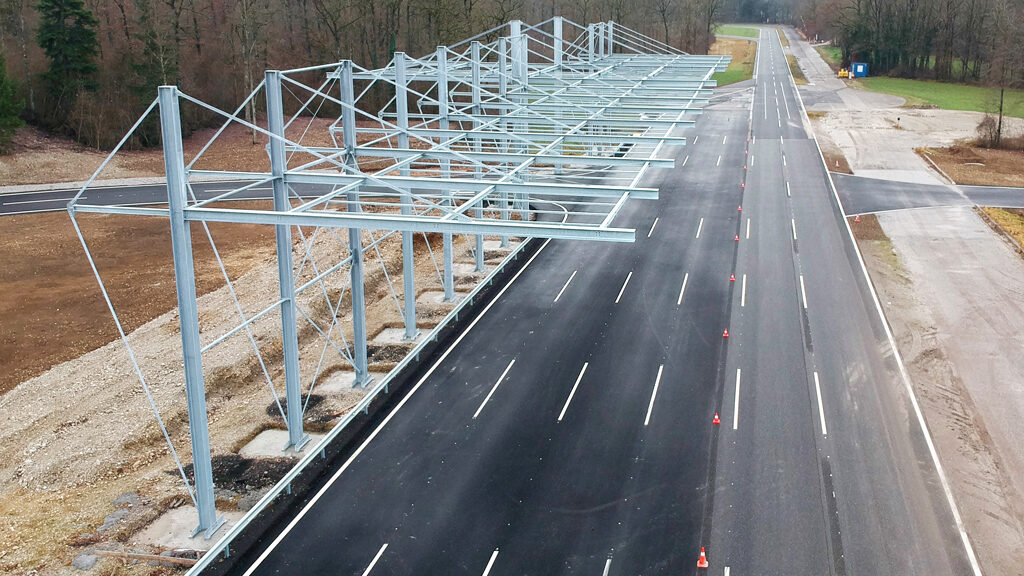Eva Tatschl-Unterberger, managing director, Digitrans, discusses Digitrans’ development of an outdoor rain plant that reproduces artificial rain for testing autonomous drive and ADAS functions – and the advantages of utilizing such a resource.
Humans can evaluate situations and make decisions based on experience and adapt their behavior according to road and weather conditions. The automated vehicle does not yet have these capabilities. It must first learn to correctly analyze driving situations in adverse weather conditions and adapt its driving behavior accordingly.
With the Outdoor Rain Plant in St Valentin, Austria, we deliver the first system that enables reproducible testing of performance, and the limits of sensors and algorithms, at different rain intensities in a realistic outdoor environment – at the push of a button.
Here are seven reasons why you should test your technology at the new Digitrans facility:
- Shifting responsibility from human to machine: With increasing levels of vehicle autonomy, more of the environmental detection is passed from driver to vehicle. More and more sensors and systems for object detection are coming onto the market that have not yet been independently tested for their performance and machine safety in adverse weather conditions. At our rain plant, such test scenarios are possible and can be done reproducibly.
- Major safety issue: Systems that are responsible for environmental detection in autonomous vehicles face similar challenges in poor visibility as a human driver. In rain, fog, snow, reflections and backlight, the sensors (lidar, radar, camera) are negatively affected in the detection of the environment and objects. Those weather effects can degrade the performance of all sensors. Lidar in particular is influenced differently than, for example, camera systems. It works by emitting light beams that are reflected from the surfaces of the environment and detected by the lidar system. This results in a lidar point cloud that shows the reflected objects in the environment. In rain, the light beams can hit a raindrop, which are then reflected, scattered or damped. This causes the system to identify an object where in reality only a raindrop has reflected the light beam. This leads to the fact that one receives a lot of false positive feedbacks. The image of the lidar starts becoming noisier when the rain increases and objects that are farther away can no longer be detected accurately enough. This needs to be addressed and improved to achieve safer automated vehicles.
- Make automated driving usable for everyday mobility in all weather: One of the biggest difficulties and therefore one of our main interests at Digitrans is to make automated driving and transportation safe and suitable for everyday use in every weather condition. To achieve this, it is necessary to test all sensors and systems and develop robust algorithms to ensure safety under a wide range of driving conditions, not only in sunshine but also in harsh weather conditions.
- Limits of indoor rain testing: The systems and tools used so far often do not provide a realistic replication of natural rain. Until now, it has only been possible to perform these tests in indoor facilities at short distances and heights and at low speeds. The scenarios that can be tested indoors on such systems may be very limited simply because of space restrictions.
- Natural rain is not suitable for AD and ADAS tests: Most natural rain is unsuitable for the systematic qualification and validation of sensor performance due to the rapid change of the intensity of natural rain. Therefore, there is a need to artificially reproduce natural rain to be able to control the intensity and drop size distribution during the duration of the test.
- Natural rain tests are difficult to reproduce: In order to achieve meaningful test results, it is necessary to have a system that shows little or no change in the rain parameters over a longer period of time – this is only possible with artificially generated rain. It must be ensured that scenarios – similar to in a laboratory environment – can be reproduced under exactly the same conditions.
- Natural rain can not be switched on when you want to test: Outdoor rain tests are difficult to plan due to the dependence of weather. They can cost a lot of time and money. The Outdoor Rain Plant at Digitrans makes it easier and more plannable to perform such tests on schedule.


